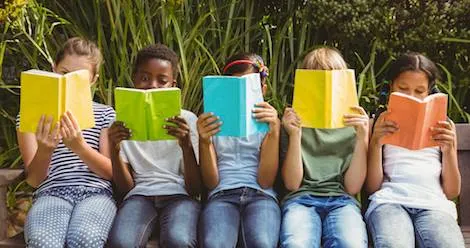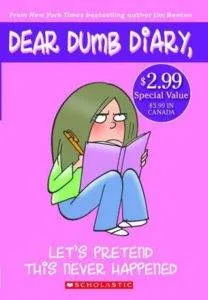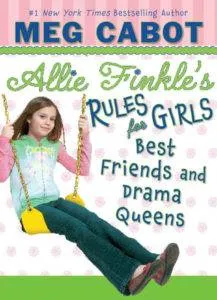
Reading Memories: Scenes That Have Followed Me to Adulthood
Certain moments infiltrate my thoughts on a regular basis. And although large issues do have their spot in my brain, most of the time these thoughts appear as small sentences. Scenes. Details.
Many of them are from the Young Adult and children’s books I’ve read in elementary and middle school.
The moments I remember often reflect the impact, honesty, and relatability of the books they come from. Here are my own favorite scenes that I have brought from my childhood books into my daily, adult-ish life.
“He says to Angeline: ‘Wow, is that your Lip Smacker I smell? ChocoMint? It’s great.’ Angeline stops just for a second and LOOKS RIGHT AT ISABELLA AND ME. Then she says to Hudson, ‘Yeah, it is.’
…Here’s the thing: Isabella is the ONLY girl in the entire school who uses ChocoMint Lip Smacker. It’s the grossest flavor ever made, but she needed her very own unique Lip Smacker flavor, and so she settled on the one nobody else likes.”
I love Dear Dumb Diary, and I love this scene. So many middle schoolers try to find a certain phrase, gesture, or object and claim it as theirs. Jim Benton beautifully packaged this “mine” sort of attitude into a lip balm flavor, and then he inflated its importance to reflect the types of details middle school students fixate on. His mention of the specific brand Lip Smacker—which was the brand I always used in elementary school—was also particularly exciting. The guy did his research, and it shows.
“‘…We did Dance Party America, and staircase surfing, and made microwave brownie soup and a cake and played bicycle light hide-and-seek and told ghost stories and—’
Cheyenne started laughing. Really. She threw back her bunny-earmuffed head and laughed.
‘You guys are such big babies!’ she cried. ‘That’s the kind of stuff we did at sleepovers back in grade three. Right, M and D?’
M and D…both nodded and laughed. I didn’t actually know them in the third grade—what people from Canada called grade three—but I was pretty sure they’d never had microwave brownie soup before. That’s an invention only my Uncle Jay has come up with. So M and D were pretty much liars as far as I was concerned. As was Cheyenne.”
I am not sure I can quite describe the level of idol worship I had for Meg Cabot after reading this paragraph. Everything about this quintessentially describes the mind of a fourth grader. Allie is simultaneously depicted as wholesome and clever while also prioritizing small details an adult might be able to ignore. With “microwave brownie soup”, Cabot captures the fascination kids have for normal concepts that are twisted into a new function (think running up the down escalator, or flipping water bottles and trying to get them to land upright). And through Allie’s indignation at the thought of Cheyenne eating something that was supposed to be her uncle’s secret recipe, Cabot reveals kids’ tendencies to hold a beloved family member’s words as absolute law, prioritize details over big-picture ideas, and misunderstand the nuance between truth and lies.
Perfection. Everything about it.
So what are your biggest childhood literary memories? What details still strike you to the core? What do you remember years after putting down a story? Let me know!


 3. ChocoMint Lip Smacker—
3. ChocoMint Lip Smacker— 1. Microwave Brownie Soup—
1. Microwave Brownie Soup—






